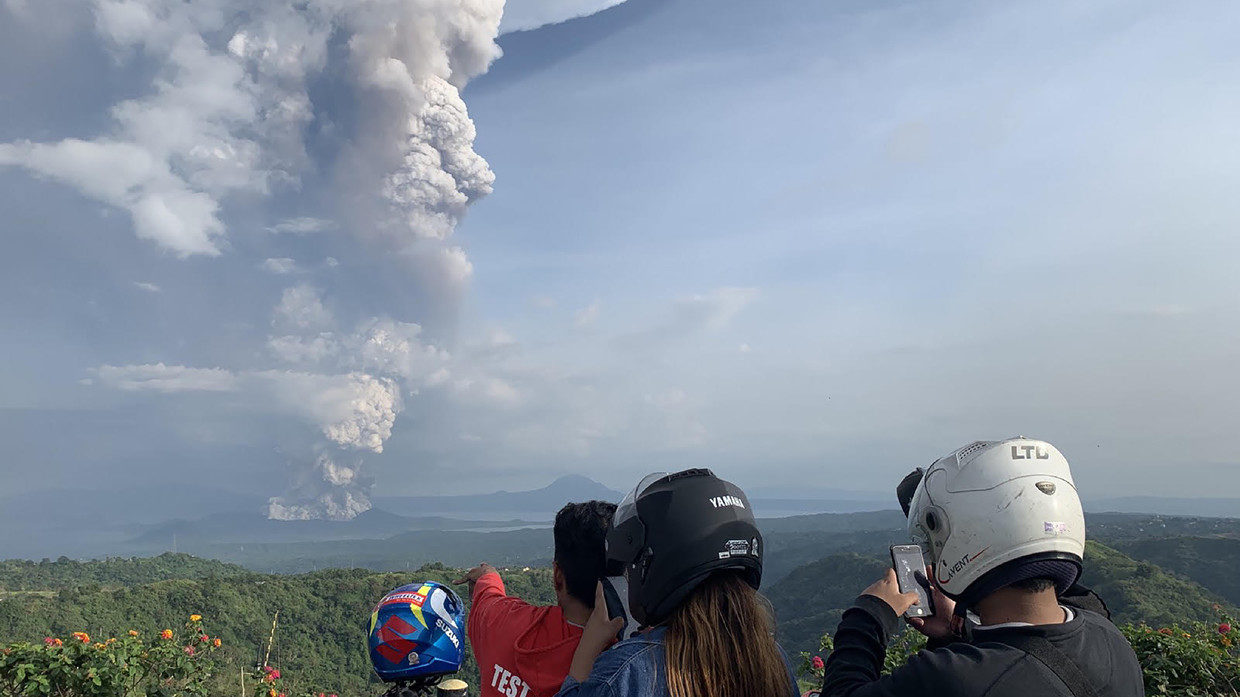Comment: ANOTHER erupting volcano 'goes electric'! It's hard to believe now because it's common in these strange times, but the sight of lightning being emitted from an erupting volcano was once folklore...

The eruption began on Sunday and was caught on video by numerous bystanders, as well as surveillance cameras used to monitor the volcano. While Taal has been quiet since 1977, when the last major eruption occurred, it has been exhibiting increased seismic activity over the past few years.
The initial eruption is described as phreatic - meaning it occurs when heated magma evaporates ground or surface water.
The plume darkened shortly afterwards, indicating that the steam was joined by actual volcanic ash.
As if footage of the eruption didn't already look menacing enough, several lightning strikes have been observed in the area. The lightning bolts were seen hitting the center of the ash column which is towering over the volcano.
As well as 'enjoying' a doomsday view, nearby communities have experienced an ashfall shortly after the eruption.
The eruption has prompted the evacuation of people living in the immediate vicinity of the volcano, with some 8,000 locals affected. Communities on the shores of the Taal lake were told to watch out for potential water disturbances and high waves that might be created by the increased seismic activity.
The spike in the mountain's activities prompted the Philippine Institute of Volcanology and Seismology (PHIVOLCS) to upgrade its threat level twice within an hour. The alert level skyrocketed from 'abnormal' to 'magmatic unrest,' suggesting that the volcano might even spew some lava.
The complex volcano rises from the waters of its namesake lake, featuring a number of craters. Its largest crater has a small lake of its own.
The Taal belongs to the so-called 'Decade Volcanos' - 16 mountains known for violent and deadly eruptions in the past and therefore considered worthy of close study and monitoring. The greatest recorded eruption of the Taal occurred back in 1754 and lasted for nearly eight months.
The deadliest eruption occurred in 1911, claiming the lives of over 1,300 people and effectively wiping out all human settlements on the volcanic island.



Comment: UPDATE 14 Jan 2020
Taal volcano's eruption continues. Check out the latest videos. ELECTRIFYING!